The Samsung Galaxy Note 10 Lite is a sign of Samsung coming around to the inevitability of a value flagship. By stripping away some features and retaining other important ones, Samsung may have found a way to compete in the highly competitive under-40k segment with two offerings — The Galaxy S10 Lite and the Note 10 Lite. Both smartphones are priced similarly, but are aimed at different users. Samsung is targeting young creators, artists and entrepreneurs with the Note 10 Lite, and in this review, we test out the phone to see if it matches up to its claims.
Performance
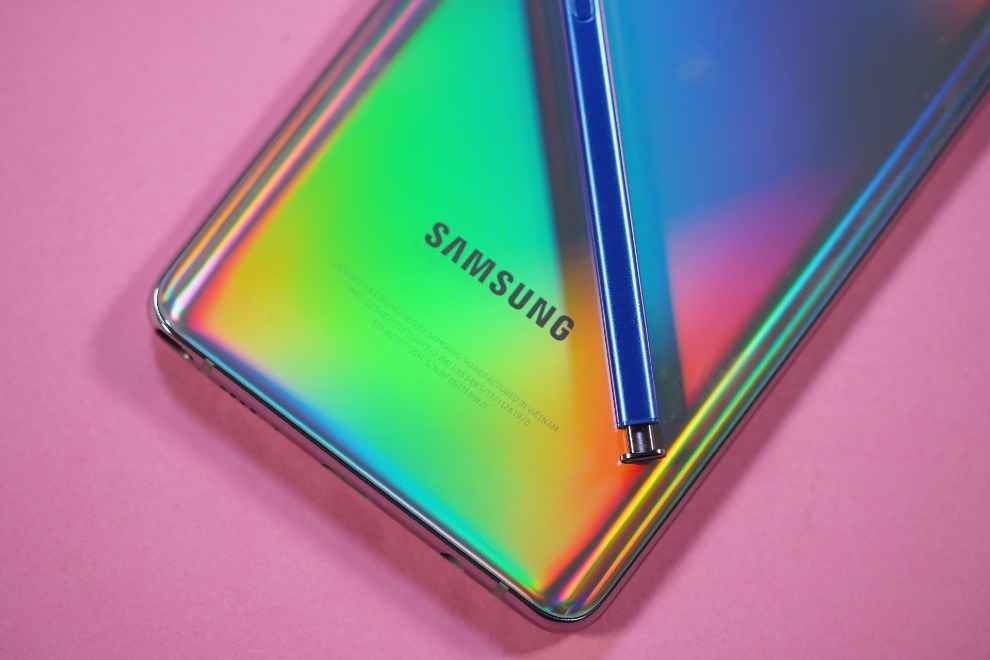
The S-Pen is the heart and soul of this smartphone
I want to begin with the most important aspect of this value flagship. Is it fast enough? The Galaxy Note 10 Lite runs on the same Exynos 9810 processor that powers the two-year-old Galaxy Note 9, while the Galaxy S10 Lite gets the Qualcomm Snapdragon 855 under the hood. The choice of SoC is pretty confusing. If this is a smartphone aimed at creators who need the most processing power, how is it that the S10 Lite got a newer, more powerful SoC while the Note 10 Lite had to make do with a two-year-old SoC? The benchmark numbers also drive this point home. In every benchmark app we ran, the Galaxy Note 10 Lite scored lower than the Galaxy S10 Lite and even lower than the OnePlus 7T and the Realme X2 Pro. The numbers are represented in the graphs below —
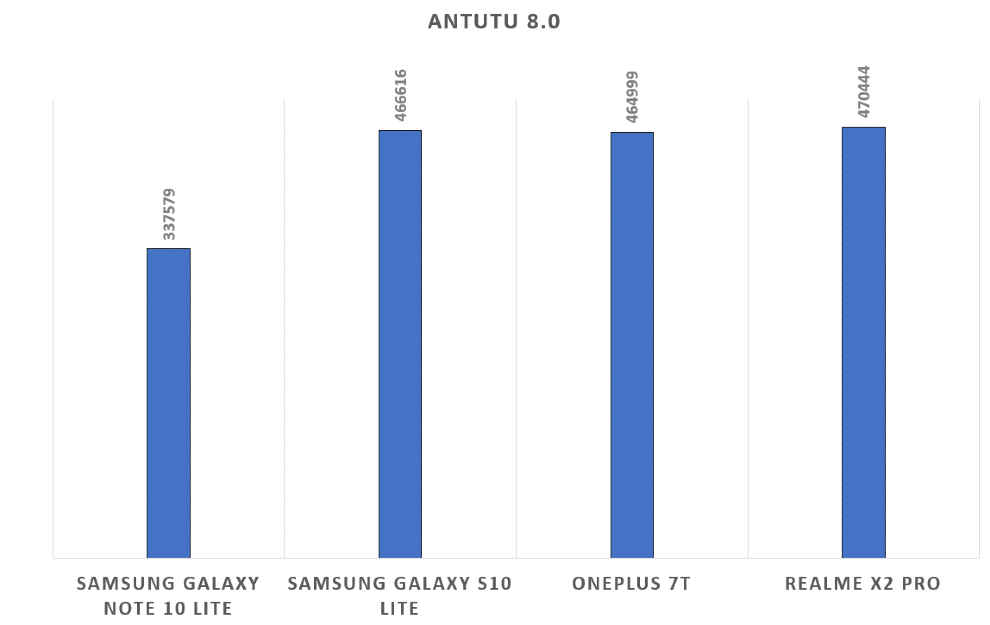
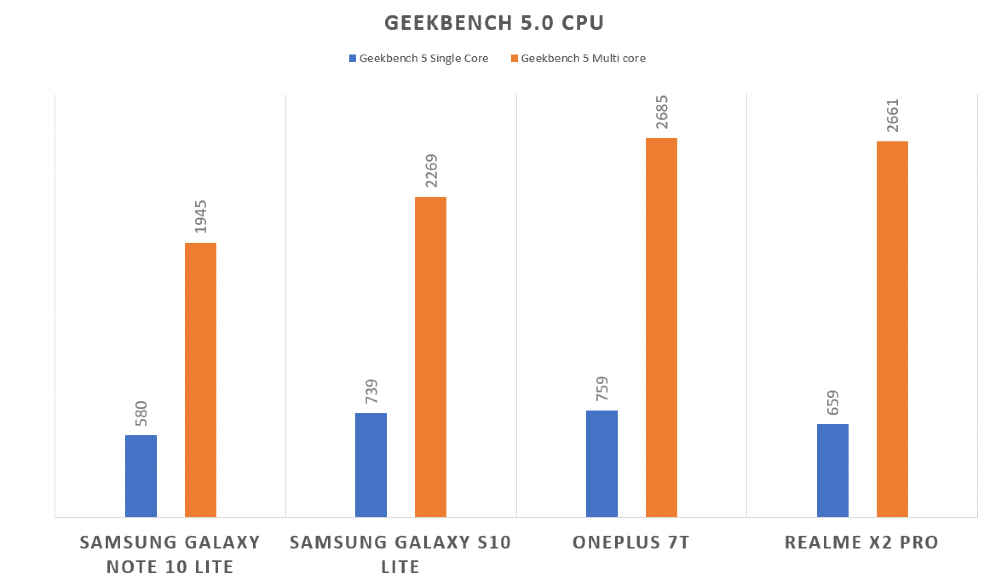
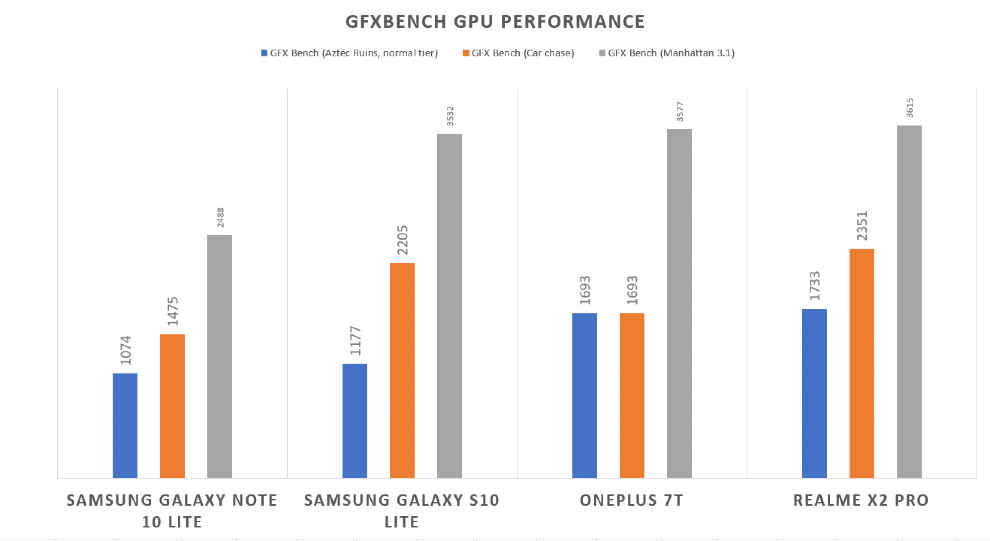
But these are just synthetic numbers, only good enough for a quick comparison. Actually using the device is not all that bad. Despite the lack of a high refresh rate display, UI actions still feel smooth and fast. The phone boots up in around 30 seconds and unlocks in a snap after taking some time initially, as both the face recognition algorithm and the in-display fingerprint sensor needs a few days to learn your patterns. There’s hardly any waiting while launching apps and the camera opens near instantly from the lock screen.
[embed]https://www.youtube.com/watch?v=XPELLAOxDYA[/embed]
While most things run smoothly, there are instances where the Galaxy Note10 Lite stutters. Watch.
However, there are moments when the processor starts showing its age. One particular instance is when I was installing apps on the phone from my Play Store library and there were multiple stutters while switching tabs and scrolling through apps. Knowing this device is aimed at creators, editing a RAW photo on the Adobe Lightroom app is pretty smooth, but rendering even a 3 minute edited video on Adobe Rush will take easily over 15 to 20 minutes, if you have applied multiple effects and transitions. The UI also slowed down when I tried to insert text in the video. A creator, I believe, would have liked the device to be a little more powerful to handle these video projects better.
It’s the S-Pen that differentiates the Note 10 Lite from all other value flagships. The stylus has been a runaway success for Samsung ever since the first Galaxy Note and holds big potential to do the same in this high-end segment as well. The S-Pen can be used for most of the functions in the more expensive Note series, including taking notes (with automatic handwriting to text conversion), taking photos (no zooming or switching modes like in the Note 10+ though), selecting text and drawing AR emojis. That’s a fairly large suite of unique features no one else is offering in this segment right now and if you like to draw or doodle on your phone, the Note 10 Lite is an excellent option. The S-Pen was quite responsive to my hands and I could scribble out sentences swiftly, albeit at my worst handwriting. Check out this video below -
[embed]https://www.youtube.com/watch?v=ILXAmtukM7I[/embed]
Forgive the bad handwriting.
The Samsung Galaxy Note 10 Lite comes in 6GB and 8GB RAM variants, both with 128GB storage. With all that the Note 10 Lite offers, the storage might leave you wanting more. There is an option to swap out the second SIM for a microSD card, but I’d have still welcomed a 256GB variant.
Tests Performed:
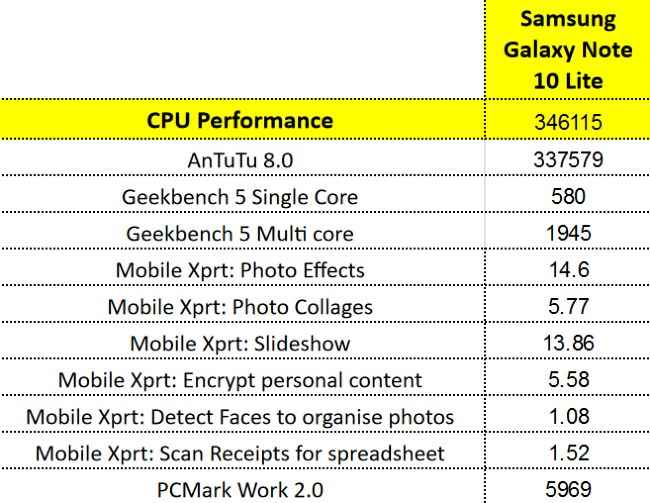
Gaming
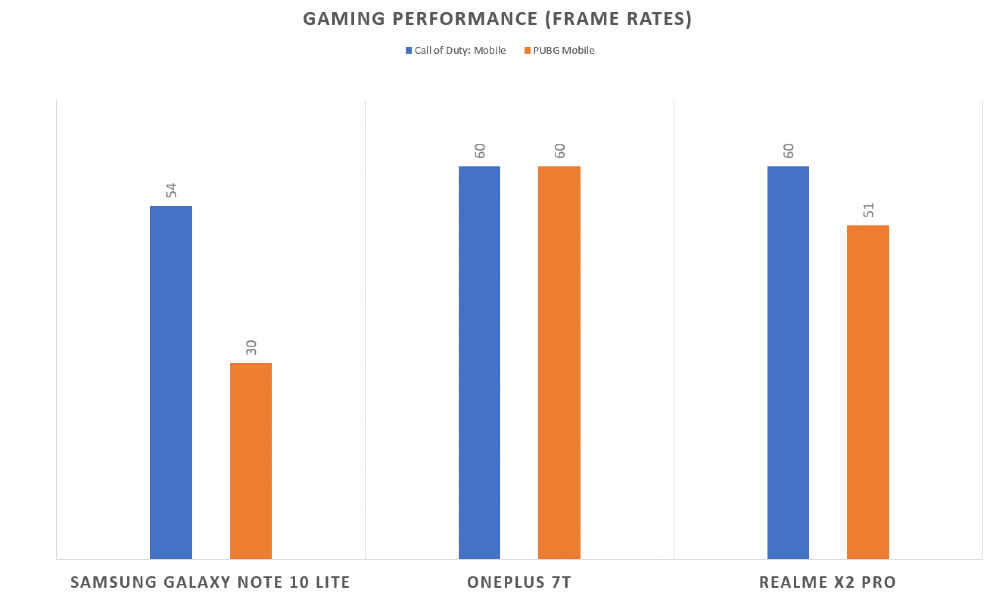
The Samsung Galaxy Note 10 Lite so far looked good enough for doodles are quick note-takers. And in gaming, the two-year-old processor was quite capable of handling heavy-duty games. Both PUBG Mobile and Call of Duty ran with high stability, but it couldn’t hit the peak frame rates like the OnePlus 7T or the Realme X2 Pro. The visuals aren’t quite as eye-popping either like we’ve seen in other smartphones, but if you have to tune in for a quick match, you may get away with a win thanks to the smooth frames it’s able to generate. The touch response is also decent enough to play as a sniper in deathmatches in CoD: Mobile.
Samsung has also baked in a gaming mode that triggers automatically when you launch a game. It’s slightly different from other gaming modes in the sense that the phone learns your usage patterns over time and maintains a threshold for temperature and memory. It also displays the estimated time you can play the game on battery. My unit is still learning my usage patterns and we will update this review after the numbers are generated.
Tests performed:
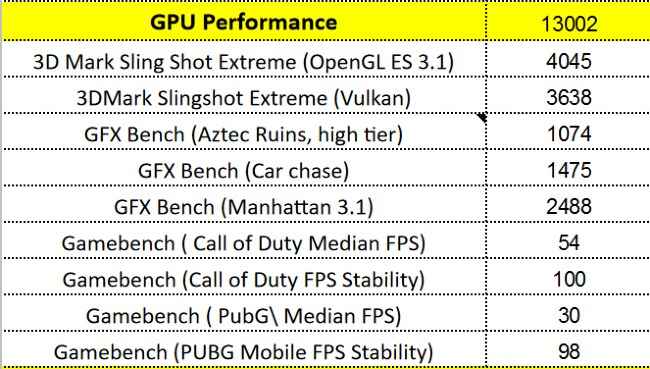
Software
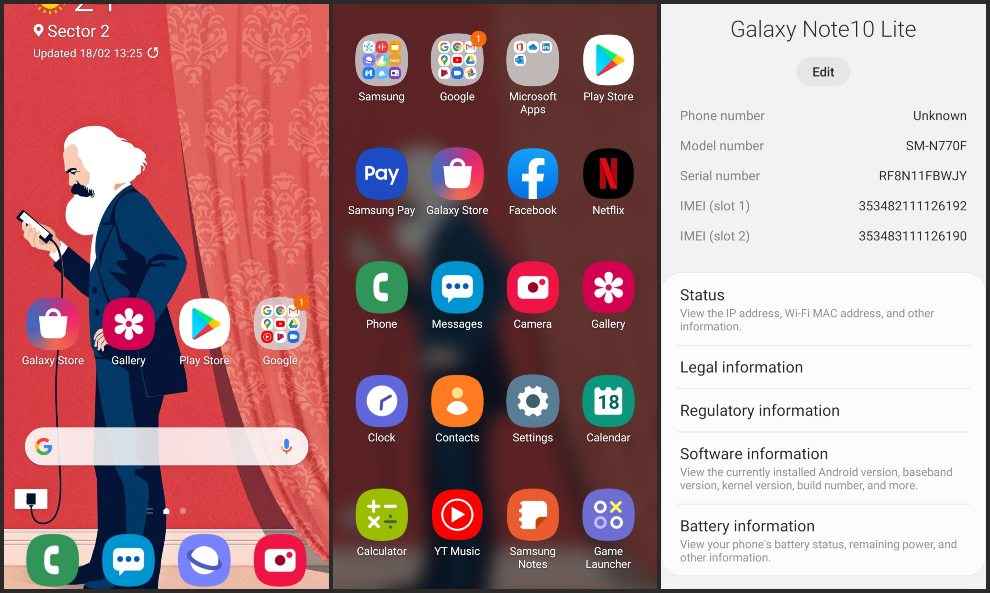
OneUI is presently one of the best-designed custom interfaces for Android. Making the full suite of features available in the sub-40k price range opens up a lot of avenues for the buyer. For one, you have the full suite of Samsung Knox security features with the Note 10 Lite along with Samsung Pay, both of which have proved to be quite useful in the past. For one, no one will be able to turn off your smartphone to turn off mobile data while the phone is locked. So if someone happens to snatch your phone, he won’t be able to turn it off and you can easily track it online. Samsung Pay also lets you pay directly from your credit and debit cards without having to physically carry them. You get the drift.
The Samsung software experience is primarily what sets these flagships apart from the rest. Right down to the customisations of icons, widgets, window sizes (yes you can resize app windows like on a desktop) and more. What you don’t get is a DeX Mode that Samsung refreshed with the latest Note 10 Plus, which could be a bit of a bummer.
Battery Life
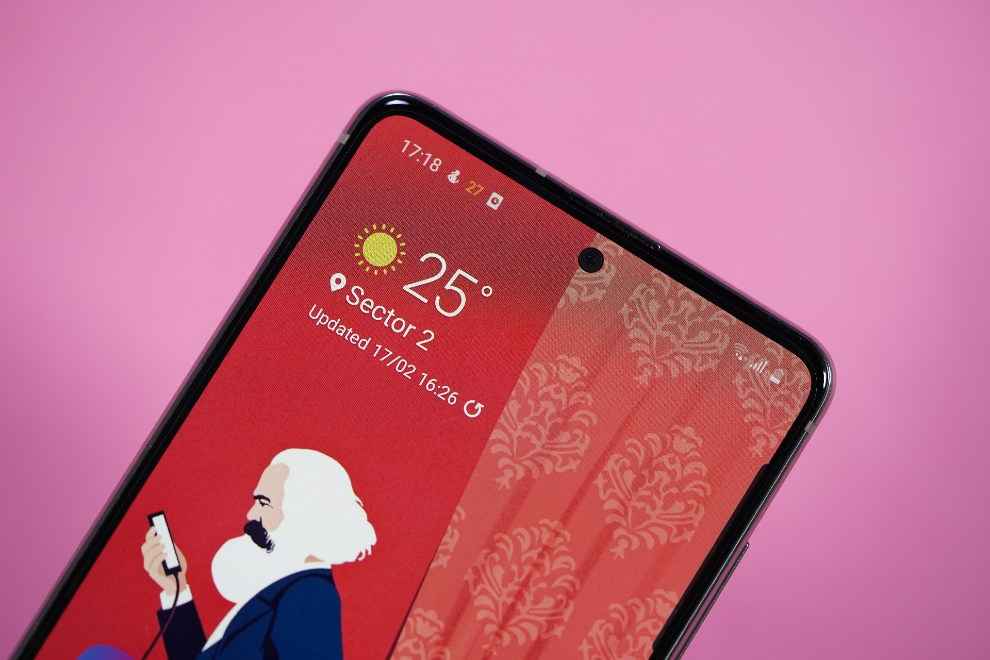
The Note10 Lite is powered by a 4500mAh battery. Clearly, Samsung intends the phone to be used well over a day, and the phone delivers that kind of battery life on normal to moderate usage. The battery drain on standby is minimal but after 15 minutes of CoD: Mobile, the battery dropped by a good 6 per cent. Similarly, 30 minutes of streaming content on Amazon Prime Video dropped the battery by 5 per cent. These are conservative numbers that do convert over to a day’s usage. However, if you are spending a lot of time shooting photos and taking 4K videos, the battery will drain much faster.
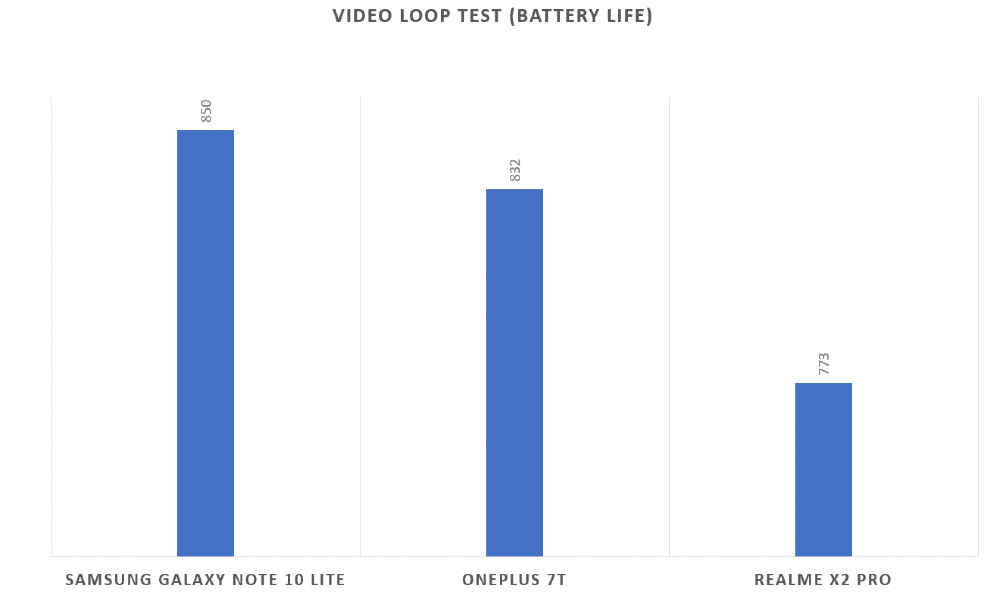
Once you do run out of charge though, the Note10 Lite tops up with a 25W fast charger included in the box. You will need a Type-C to Type-C cable to achieve the full speeds. Interestingly, the S10 Lite does support 45W fast charging but still gets a 25W charger in the box. The phone tops up to full capacity in around 90 minutes.
Tests performed:
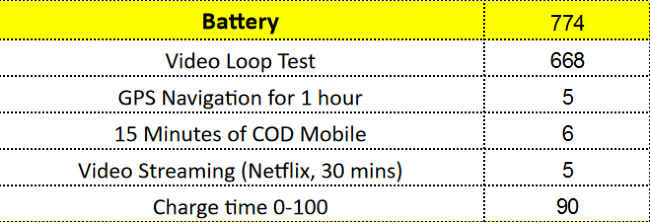
Camera
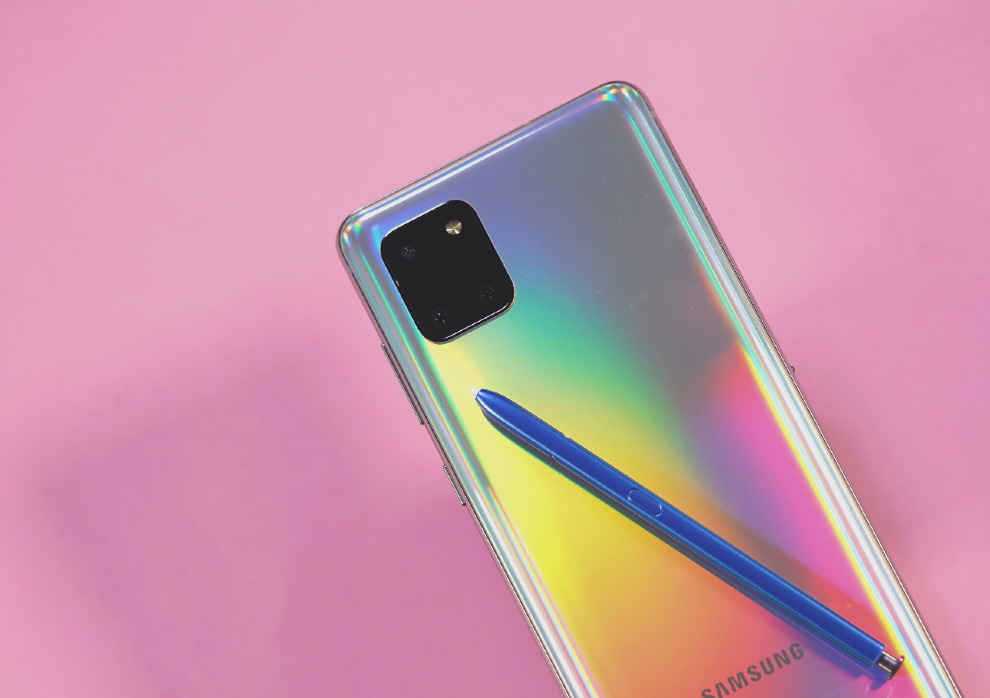
More than the S-Pen or just Samsung’s presence in the value flagship segment, what should really scare the likes of OnePlus and Realme in the premium segment is Samsung’s penchant for offering great cameras. So far, OnePlus has always received flak for delivering a sub-par camera experience, at least as far as flagships are concerned and we observed how the Google Pixel 3a manages to create better photos more consistently. The Samsung Galaxy Note 10 Lite’s camera also does something similar. But with some limitations in place.
The Note 10 Lite’s camera setup comprises of three 12MP cameras, each cut out for different functions. There’s one with a wide lens and f/1.7 aperture, another is a telephoto lens with 2x optical zoom and another is an ultrawide lens with f/2.4 aperture. Both the primary and telephoto lenses are optically stabilised and there’s a super steady video mode to shooting objects, while in motion.
Here’s how the images came out —
Daylight
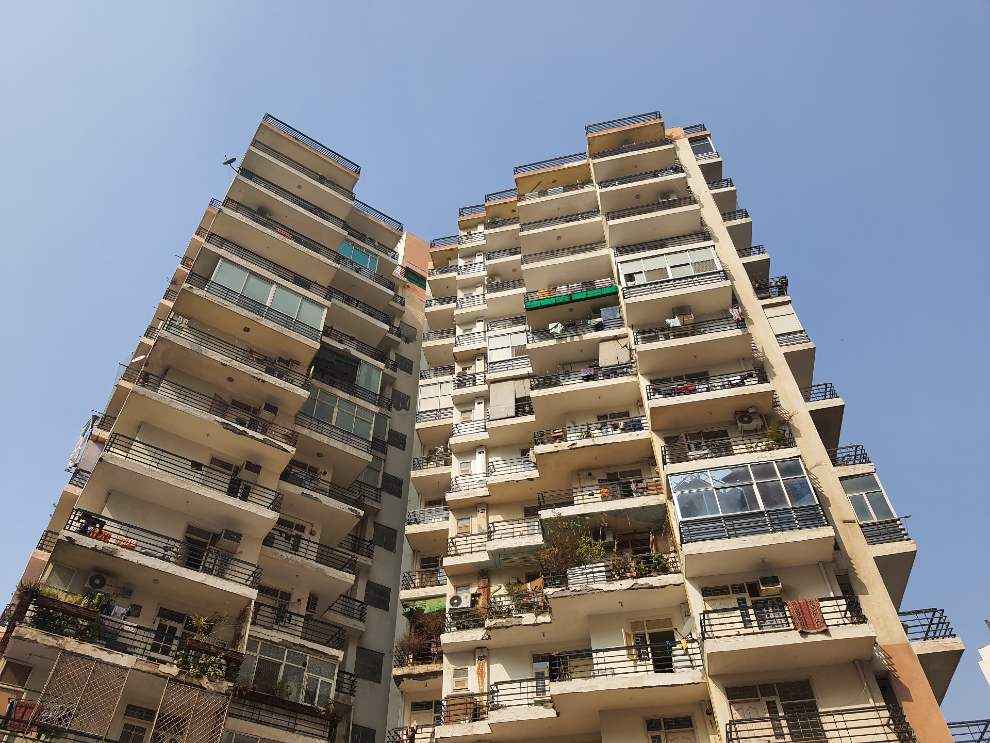

Photos from the f/1.7 primary camera is a delight to see. They are sharp, have the right amount of details and the colour reproduction isn’t too saturated nor is it too bland. The dynamic range is what’s lacking in the Note10 Lite as daytime shots often have their highlights clipped. The lack of dynamic range is more evident while shooting a video, but more on that later. You also don’t get the dual aperture system that’s now become the staple in Samsung flagships.
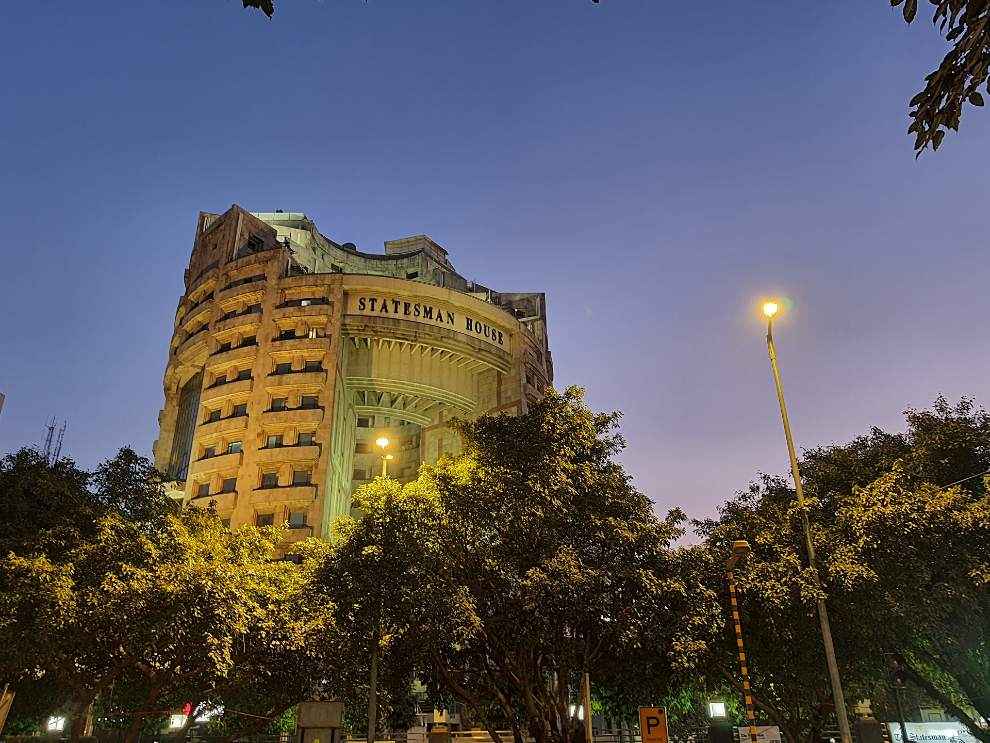
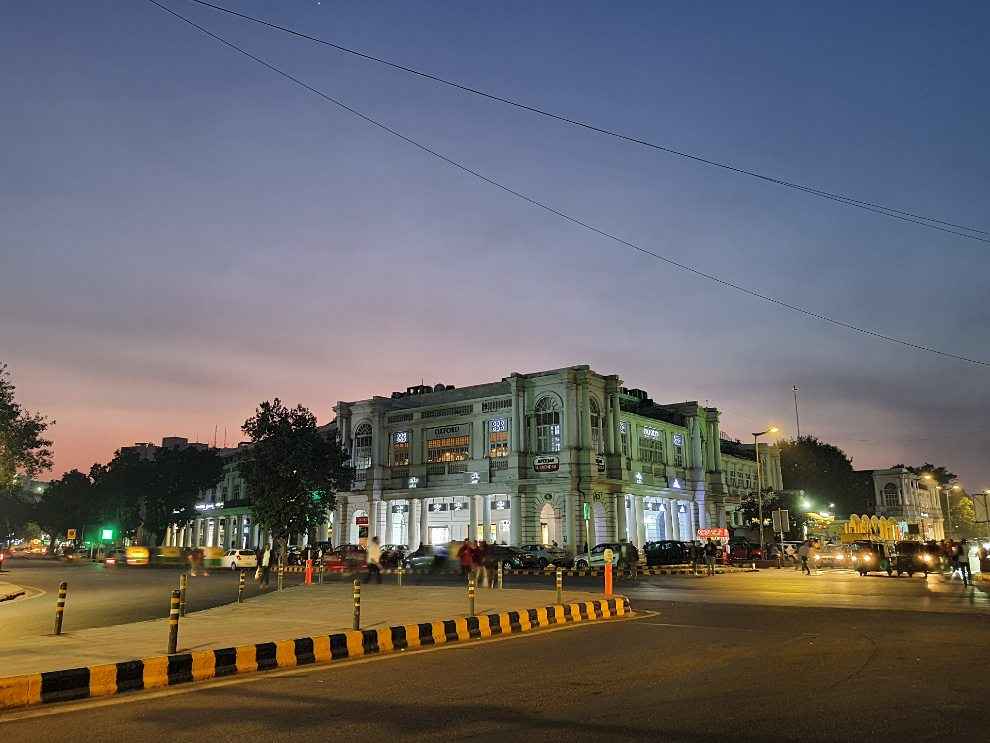
The Note10 Lite also comes with a dedicated night mode that works in the same principle as other night modes in competitors. It combines multiple photos together and takes the best parts to combine into a decent lowlight image. The downside is that you can’t capture objects in motion under low-light. The frame should be steady and if so, the Note10 Lite is able to take a sharp lowlight shot. Zooming in won’t produce too many details though, but the brightness and the dynamic range are pretty good using the night mode.
Ultrawide camera
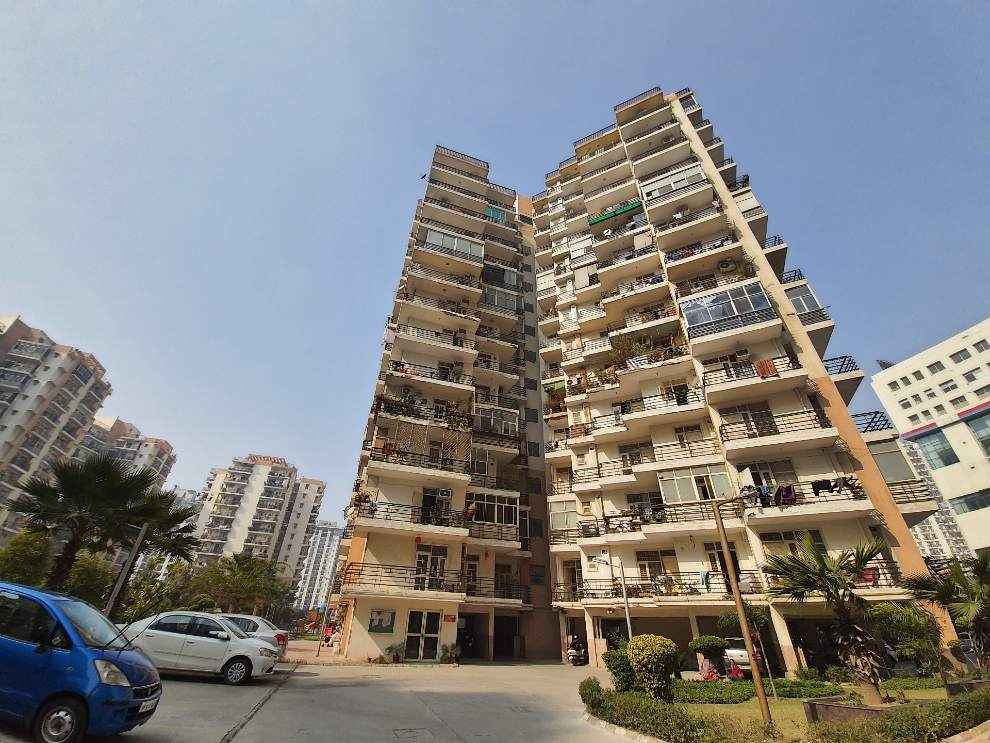

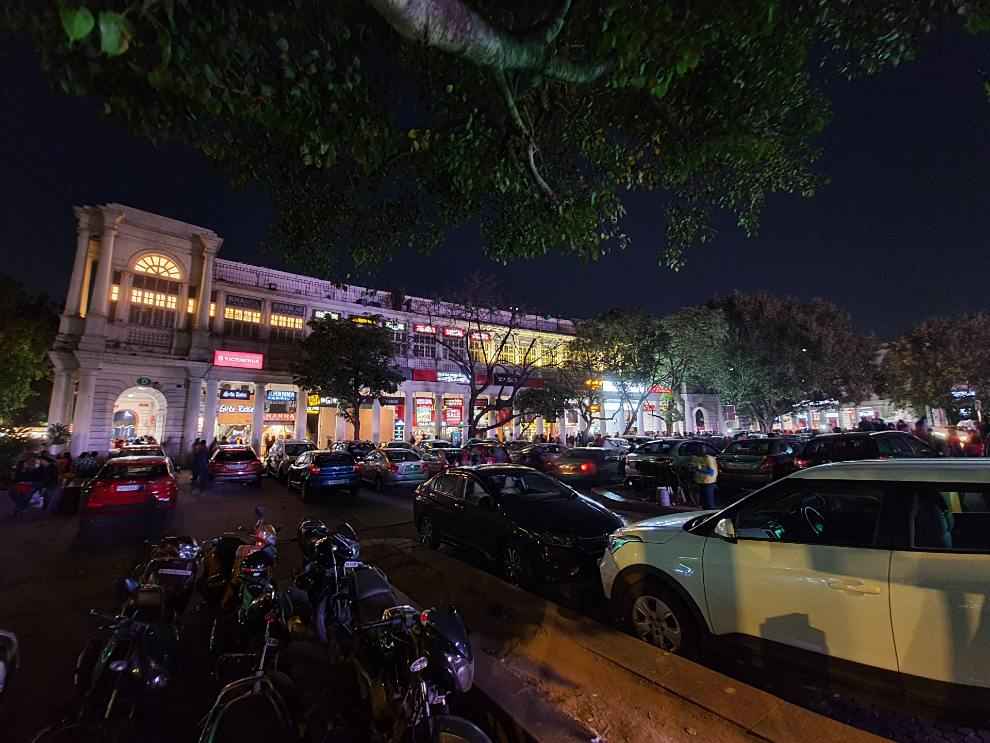
Ultrawide lenses in the Samsung flagships have been pretty amazing so far with consistent performance. But like with all Samsung flagships, the ultrawide lens does not have autofocus. That means you won’t be able to use it as a macro lens. That aside, the ultrawide lens is pretty awesome. I happened to use that particular lens more than the primary lens on this phone. Provided the light is optimum, photos from the ultrawide lens also look similar to those taken from the primary lens, but in low-light, the images come out much darker even after using the night mode. They are darker, but the night mode manages to retain the sharpness only if you don’t zoom in.
Telephoto camera
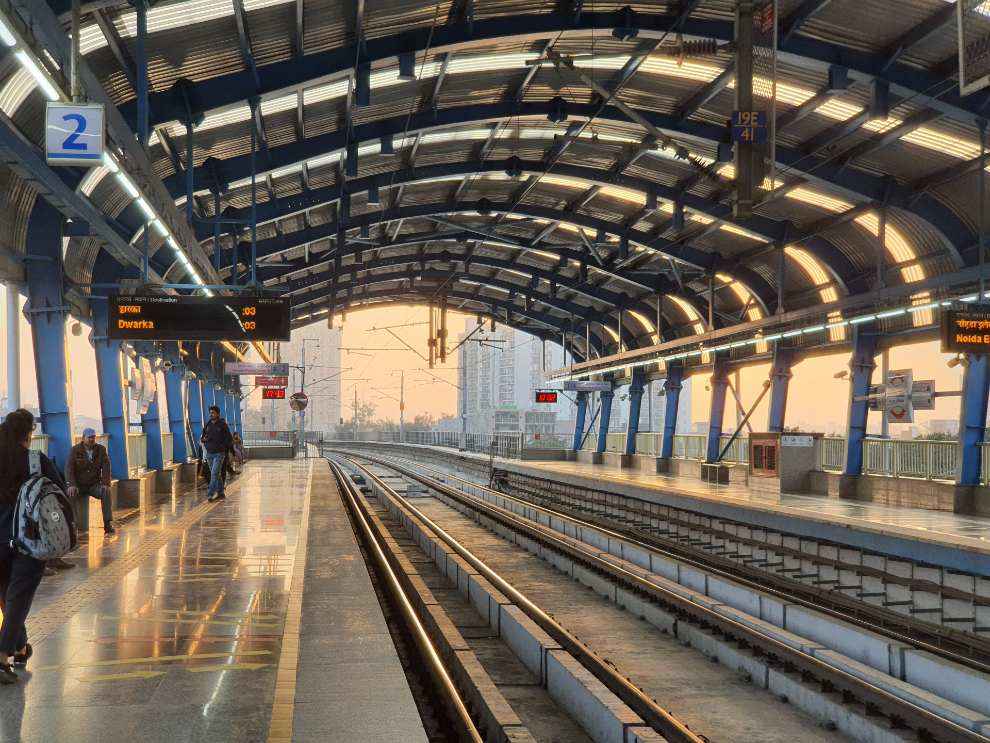
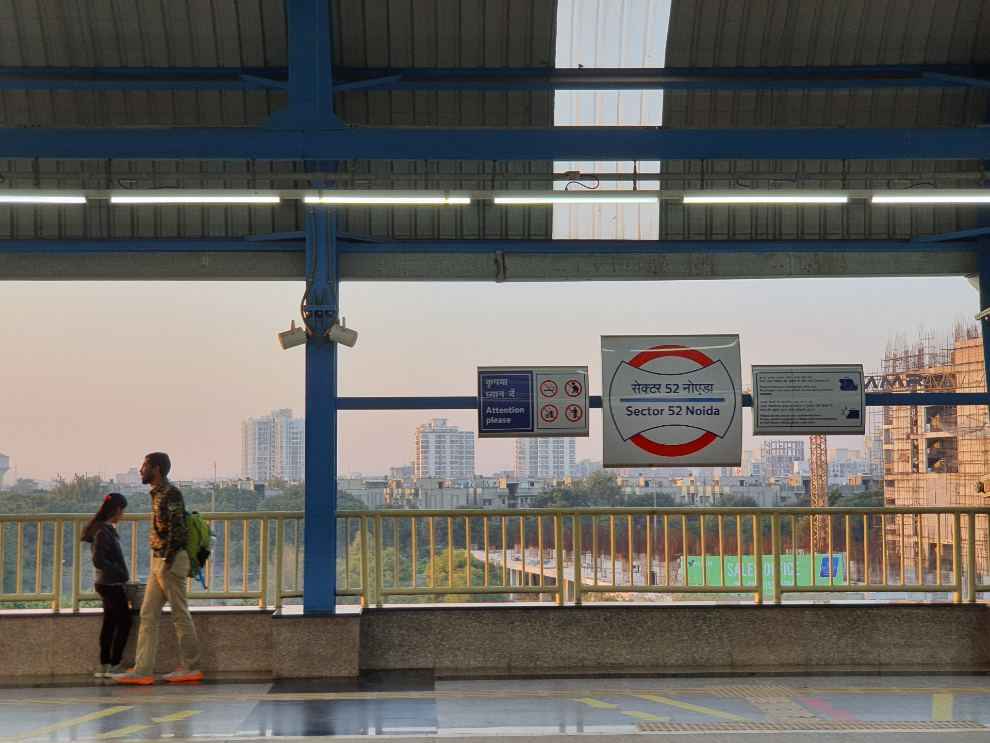
The addition of a 2x optical zoom completes the setup. It’s easily one of the best in the segment, despite a rather high f/2.4 aperture. You won’t be able to get good results after sunset but otherwise, the lens does well to capture faraway subjects with good sharpness. The sensor does tend to clip highlights a bit but the shutter response and autofocus are right on point. Interestingly, when there's low light, the phone automatically switches to the primary camera and performs a 2x digital zoom instead of using the telephoto lens.
Portrait Mode

The portrait mode offers two modes to shoot with. One with a wide view and another at 2x zoom. Both modes are able to produce decent portraits. I used the mode extensively on my pet dog and the results were more or less similar to what I’ve seen on phones in this segment. The area of focus is pretty small and covers only the snout and the eyes. The rest of my pet’s face is blurred quite inconsistently. The effect is better on humans. You also get three bokeh patterns to choose from, including swirl and zoom patterns.
Selfie Camera

The 32MP selfie camera also comes with portrait mode, slo-mo video but no night mode. By default, it bins four pixels into one to output an 8MP image. It also captures selfies at f/2.2 aperture which is smaller than the average in that segment. Selfies are also given the extra beautification treatment by default, but you can turn it off from the camera app itself. The background blur from the front camera is quite consistent.
Videos
Now, Samsung flagship smartphones have been pretty good at capturing videos, but the Note10 Lite is not the best the company has to offer. Yes it can shoot in 4K resolution at 60 FPS, and there’s a super steady mode as well, but videos shot from both modes look far too overprocessed. It seems Samsung is applying a high amount of interpolation to achieve shake-free 4K videos at 60fps. Even the 960fps super slo-mo mode does not look anything like the quality we're used to from Samsung flagships. We also noticed a lot of focus drops and clipped highlights. You can see some of the samples we have shot in the videos below —
[embed]https://www.youtube.com/watch?v=AJmUhQLJINk[/embed]
Super Steady video
[embed]https://www.youtube.com/watch?v=crRXY4R7qE8[/embed]
1080p video@ 60 FPS
[embed]https://www.youtube.com/watch?v=2zOev0BpST0[/embed]
4K video @ 60 FPS
Design and Display
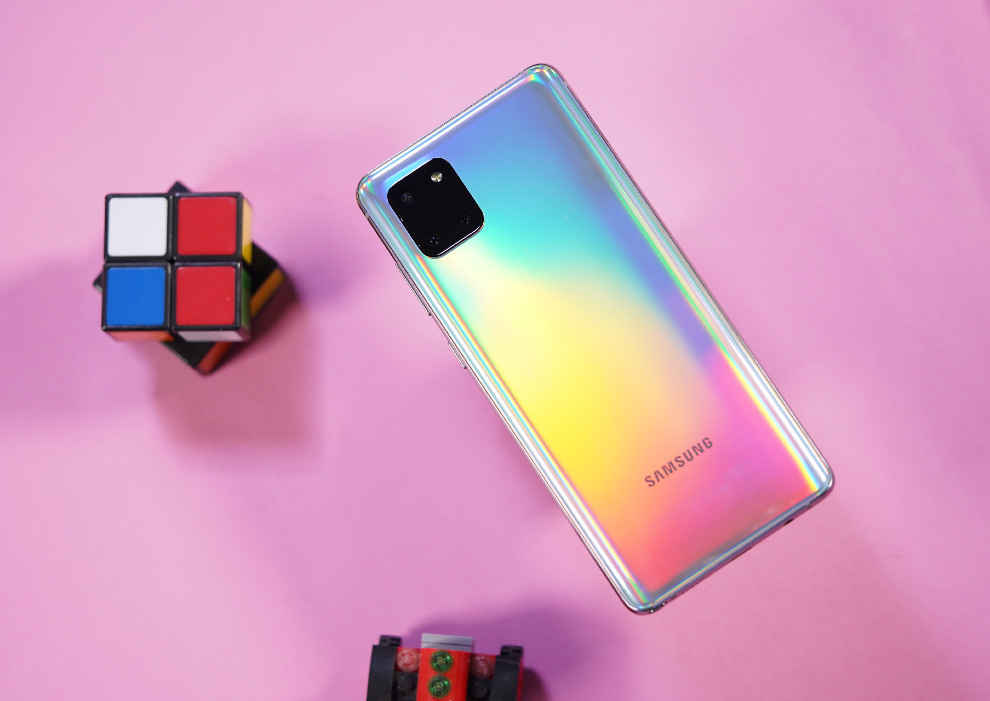
The Samsung Galaxy Note 10Lite doesn’t do anything extraordinary to stand out in terms of design. Instead, Samsung went ahead with a tried and tested formula. Flat AMOLED display with a punch-hole camera in the centre and a glossy gradient exterior that’s similar to the finish of the Note10 Plus. And, slightly thicker than the S10 Lite to accommodate the S-Pen. There’s a single bottom-firing speaker and a 3.5mm headphone jack as well(another way of differentiating the Note10 Lite from the S10 Lite). The camera module at the back sits nicely flush with the body but the shape is a bit unappealing. It looks like the module on the Pixel 4 and could have very well been arranged in the old-fashioned vertical or horizontal stack. There’s also no heart-rate sensor like you would get on the flagships. Also this isn’t IP68 rated water and dust resistant.

The display is another place where Samsung has cut corners. After the Note10 Plus, the Note10 Lite gets the regular Super AMOLED display stretching 6.7-inches with FHD+ resolution. It has a 60Hz refresh rate and comes with HDR certification, but does not yet support HDR playback from Netflix or Amazon Prime Video. The colours are also not quite as vibrant as the OnePlus 7T or the Realme X2 Pro, even though both phones use displays made by Samsung. The Note10 Lite’s panel manages to hit 554 lux outdoors and 2 lux indoors which is decent enough. The auto-brightness also works seamlessly to adjust the screen brightness.
Tests performed:
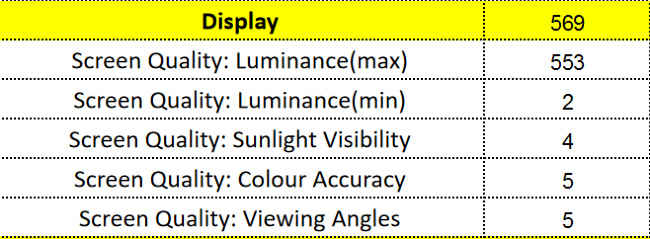
Bottomline
Cutting corners in the build quality and hardware is how Samsung was able to bring the Note10 Lite’s price down to compete with the value flagships. The S-Pen is what makes this unique in this segment, but the old processor acts as a handicap. The Samsung Galaxy Note10 Lite may not be the fastest smartphone in this segment, but it’s a consistent performer. Be it the camera performance, or when using the S-Pen and even while gaming. Then again, don’t expect the Note10 Lite to complete tasks as fast as say, the OnePlus 7T or the Realme X2 Pro, or even the Galaxy S10 Lite.
[ad_2]
Source link

Post a Comment